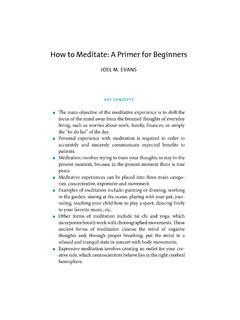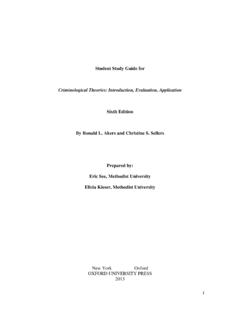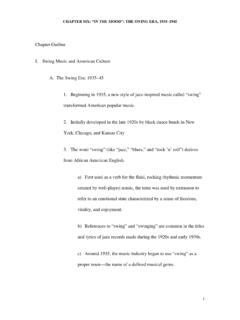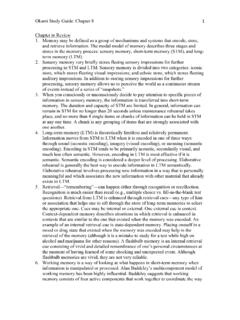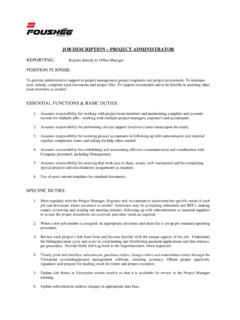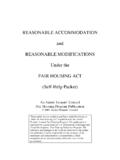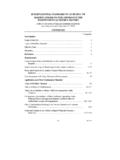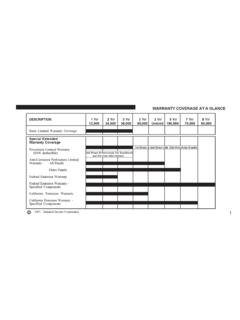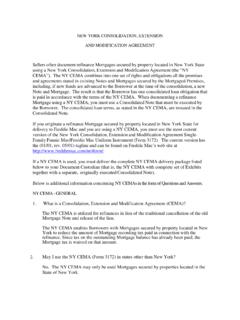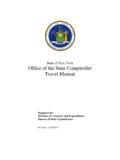Transcription of Comprehensive Elimination Diet - Oxford …
1 Comprehensive Elimination diet Liz Lipski, PhD, CCN828-645-7224 Th e Comprehensive Elimination diet is a dietary program designed to clear the body of foods and chemicals to which you may be allergic or sensitive. Th e main rationale behind the diet is that these modifi cations allow your body s detoxifi cation machinery, which may be overburdened or compromised, to recover and begin to function effi ciently again. Th e dietary changes help the body eliminate or clear various toxins that may have accumulated due to environmental exposure, foods, beverages, drugs, alcohol or cigarette smok-ing. It also helps reduce infl ammation throughout your body. Th is called an Elimination diet because you remove certain foods and food categories from your diet .
2 During a period of two to three weeks, you eliminate the foods from your diet that are the most likely culprits of sensitiv-ity symptoms. If your symptoms improve during the three-week period, you ll carefully add foods back into your diet one at a time to see which foods may be triggering symptoms. Make sure to read all labels carefully to fi nd hidden allergens. Eat a wide variety of foods and do not try to restrict your calorie intake. If you fi nd no improvement within three weeks either you do not have any food allergies, or you may have food allergies but there is yet another factor complicating the picture. Th ere are no magical answers here; this is a journey of self-exploration and discovery. In my experience, I have found this process to be generally well tolerated and extremely benefi cial.
3 In fact, it s the best clinical tool I know. Th ere is really no typical or normal response. A person s initial response to any new diet is highly variable, and this diet is no exception. Th is can be attributed to physio-logical, mental and biochemical diff erences among individuals; the degree of exposure to, and type of toxin ; and other lifestyle factors. Most oft en, indi-viduals on the Elimination diet report increased energy, mental alertness, decrease in muscle or joint pain and a general sense of improved well-being. However, some people report some initial reactions to the diet , especially in the fi rst week, as their bodies adjust to a diff erent dietary program. Symptoms you may experience in the fi rst week or so can include changes in sleep pat-terns, lightheadedness, headaches, joint or muscle stiff ness and changes in gas-trointestinal function.
4 Such symptoms rarely last for more than a few days. I realize that changing food habits can be a complex, diffi cult and some-times confusing process. It doesn t have to be, and I think that I have simplifi ed the process with diet menus, recipes, snack suggestions and other information to make it a do-able process. Read this information carefully. Eat only the foods listed under Foods to Include, and avoid those foods shown under Foods to Exclude in the Comprehensive Elimination diet Guidelines. Th ese Guidelines are intended as a quick overview of the dietary plan. If you have a question about a particular food, check to see if it is on the food list. You should, of course, avoid any listed foods to which you know you are intolerant or allergic. We also may change some of these guidelines based upon your personal health condition and history.
5 Tips Th e fi rst 2 to 3 days are the hardest. It s important to go shopping to get all of the foods you are allowed to have. Plan your meals and have a pot of rice available. Eat simply. Cook simply. Make a pot of chicken-vegetable-rice soup. Make a large salad. Cook extra chicken. Have prepared food on hand so you can grab something quickly. Eat regular meals. You may also want to snack to keep your blood sugar levels normal. It is important to keep blood sugar stable. Carry food with you when you leave the house. Th at way you will have what you are allowed and not be tempted to stray off the plan. It may be helpful to cook extra chicken, sweet potatoes, rice, beans, etc. that can be reheated for snacking or another meal.
6 Avoid any foods that you know or believe you may be sensitive to, even if they are on the allowed list. Try to eat at least three servings of fresh vegetables each day. Choose at least one serving of dark green or orange vegetables (carrot, broccoli, winter squash) and one raw vegetable each day. Vary your selections. Th is is NOT a weight loss program. If you need to lose or gain weight, work with your practitioner on a program. Buy organic produce when possible. Select fresh foods whenever you can. If possible, choose organically grown fruits and vegetables to eliminate pesticide and chemical residue consumption. Wash fruits and vegetables thoroughly. If you are a vegetarian, eliminate the meat and fi sh and consume more beans and rice, quinoa, amaranth, teff , millet and buckwheat.
7 If you are consuming coff ee or other caff eine-containing beverages on a regular basis, it is always wise to slowly reduce your caff eine intake rather than abruptly stop it; this will prevent caff eine-withdrawal headaches. For instance, try drinking half decaf/half regular coff ee for a few days, then slowly reduce the total amount of coff ee. Read oil labels; use only those that are obtained by a cold pressed method. If you select animal sources of protein, look for free-range or organi-cally raised chicken, turkey or lamb. Trim visible fat and prepare by broiling, baking, stewing, grilling or stir-frying. Cold-water fi sh ( , salmon, mackerel, and halibut) is another excellent source of protein and the omega-3 essential fatty acids, which are important nutrients in this diet .
8 Fish is used extensively. Remember to drink the recommended amount (at least two quarts) of plain, fi ltered water each day. Strenuous or prolonged exercise may be reduced during some or the entire program to allow the body to heal more eff ectively without the additional burden imposed by exercise. Adequate rest and stress reduction are also important to the success of this program. You may use left overs for the next days meals or part of a meal, left over broiled salmon and broccoli from dinner as part of a large salad for lunch the next day. POSSIBLE PROBLEMS: Most people feel better and better each day during the allergy Elimination diet . However, if you are used to using caff eine, you may get withdrawal symptoms the fi rst few days which may include: head-aches, fatigue irritability, malaise, or increased hunger.
9 If you fi nd your energy lagging, you may need to eat frequently to keep your blood sugar levels (think-ing, energy) level. Be sure to drink plenty of water. TESTING INDIVIDUAL FOODS: Once you have completed three weeks you can begin to add foods back into your diet . KEEP A JOURNAL OF ALL FOODS EATEN AND ALL SYMPTOMS. Be sure to add foods one at a time, one every two days. Eat the test food at least twice a day and in a fairly large amount. Oft en an off ending food will provoke symptoms quickly within in 10 minutes to 12 hours. Signs to look for include: headache, itching, bloating, nausea, dizziness, fatigue, diarrhea, indigestion, anal itching, sleepy 30 min-utes aft er a meal, fl ushing, rapid heartbeat. If you are unsure, take the food back out of your diet for at least one week and try it again.
10 Be sure to test foods in a pure form: for example test milk or cheese or wheat, but not macaroni and cheese that contains milk, cheese and wheat! THE RESULTS: Avoiding symptom-provoking foods and taking support-ive supplements to restore gut integrity can help most food allergies/sensitivi-ties resolve within 4 to 6 months. Th is means that in most cases you will be able to again eat foods that formerly bothered you. In some cases, you will fi nd that the allergy doesn t go away. In this case you must either wait longer or it may be a fi xed allergy that will be lifelong. AFTER THE TESTING: It would be advisable to return to your health practitioner for a follow-up visit to determine your next steps. If you fi nd aller-gies to many foods, you may want to explore a 4-day food rotation diet .



